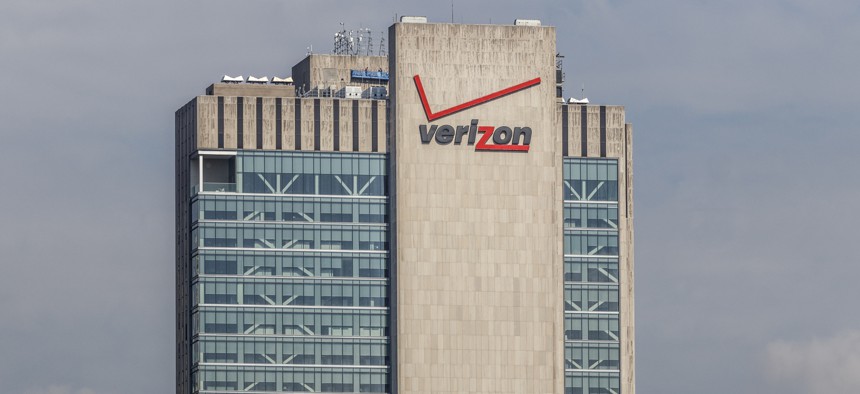Verizon Set to Lead Naval District Washington’s Pivot to a Modern Telecommunications Infrastructure

New York - Circa August 2019: The Verizon Building at 375 Pearl Street. jetcityimage/istockphoto
The company announced a recent $78 million award under the government’s EIS contract.
Naval District Washington—or NDW, the regional hub that supports operations and management for all Navy installations within a 100-mile radius of the Pentagon—is set to award Verizon Public Sector $78 million via the Enterprise Infrastructure Solutions telecommunications contracting vehicle.
Among other responsibilities, Verizon will staff cybersecurity and other personnel positions at NDW’s Regional Operations Center and upgrade the agency’s primary vessel for how its insiders connect and communicate.
Specifically, the communications company will help shift NDW from its Time-Division Multiplexing platform to a more modern Internet Protocol Voice Service at the NDW’s Indian Head, Maryland-based facility.
“The transition from TDM to IPVS involves moving from a multiplexing technique that has served as the underlying technology for voice transmission in public-switched networks going back decades to a more modern, efficient and cost effective method that uses Internet Protocol and sends voice signals via the internet,” a Verizon spokesperson told Nextgov on Monday. “It allows users to integrate their voice, video and data networks, enabling cost savings and providing features that TDM-based services cannot.”
The billion-dollar EIS contract falls under the General Services Administration and was designed as a replacement for the governmentwide Networx and Washington Interagency Telecommunications Systems, or WITS-3, contracts, which are expected to sunset in 2023. It’s meant to underpin the procurement of capabilities that meet federal agencies’ future-facing information technology, telecommunications, and infrastructure needs.
Beyond backing the Naval district’s move to a hosted IPVS, Verizon employees will also be staffed in NDW’s regional operation center that focuses on public safety efforts. There, they will help monitor and confront potentially catastrophic events and maintain the district’s regional cybersecurity accreditation. They’ll also work on application intrusion detection and risk management framework validation.






